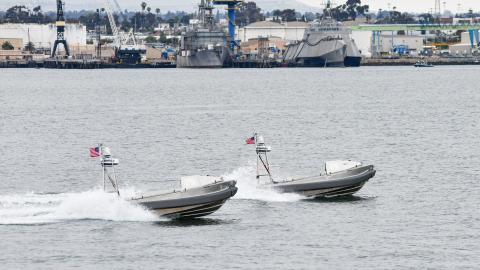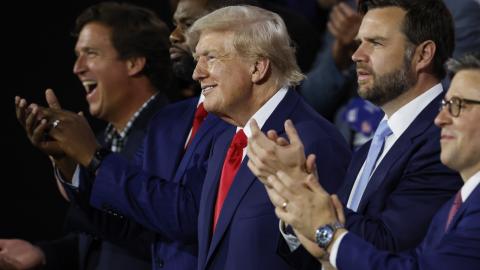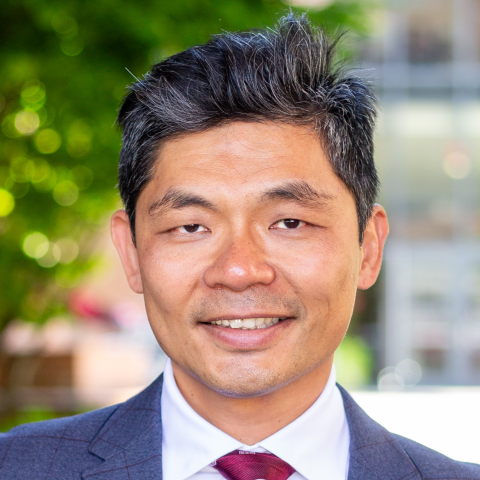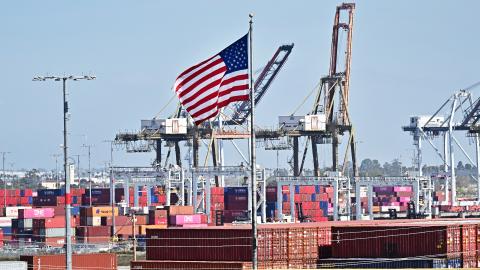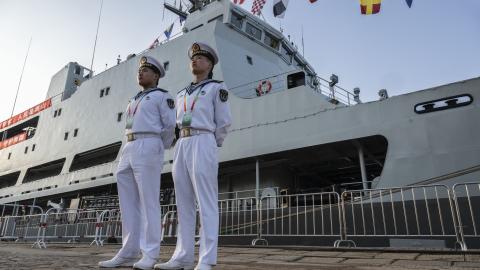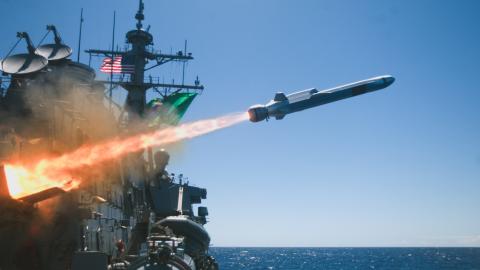“The bombers kept coming,” the late Vice Admiral Jim Stockdale recounted in his extraordinary 1984 memoir In Love and War, “and we kept cheering.”
That night, over fifty-two years ago, on December 18, 1972, Stockdale and his fellow prisoners-of-war witnessed the beginning of the end of the Vietnam War from their Hanoi Hilton prison cells.
For the next ten nights – except for Christmas Day – wave after wave of B-52’s attacked military targets around Hanoi. By day, Navy and Air Force tactical jets bombed ammunition, fuel depots, and surface-to-air-missile sites across North Vietnam.
“Guards who were normally enraged by loud talk, guards who normally thrust their bayoneted rifles through the bars and screamed at us if we dared shout during air raids,” Stockdale further recounted, “could be seen silently cowering in the lee of the prison walls, their faces ashen in the light reflected from the fiery skies above.”
“We prisoners knew this was the end of the North Vietnamese resistance, and the North Vietnamese knew it, too,” Stockdale wrote.
Few wartime eyewitness accounts so eloquently convey the euphoria of captives and their captors’ sense of doom as Stockdale’s manages to do:
“At dawn the streets of Hanoi were absolutely silent. The usual patriotic wake-up music was missing, the familiar street sounds, the horns, all gone. Our interrogators and guards would inquire about our needs solicitously. Unprecedented morning coffee was delivered to our cellblocks.”
And few wartime eyewitness accounts cite the precise moment a fundamental war winning principle was achieved:
“One look at any Vietnamese officer’s face…told the whole story. It telegraphed accommodation, hopelessness, remorse, fear. The shock was there; our enemy’s will was broken,” Stockdale wrote.
This act of military coercion was set in motion weeks earlier when, as cited in naval historian Edward Marolda’s 2021 Admirals Under Fire, President Richard Nixon told his chief military adviser, Admiral Thomas Moorer, “This is your chance to use military power effectively to win this war, and if you don’t, I’ll consider you responsible.”
To win this war. Rarely has a commander-in-chief’s order been as clear, and accountability for carrying it out as stark.
Moorer, chafing from years of rudderless strategy and the gradual application of military power absent clear political objectives, jumped at the chance to win the war.
By December 29th, North Vietnam was on its heels. A few short months later, 591 American prisoners-of-war were reunited with their families after years of deprivation and torture.
What Stockdale and his isolated band of brothers could not have known was that the stage was set for their release nine months earlier. On March 30, 1972, North Vietnamese amassed infantry and armored vehicles poured across the DMZ.
Their goal: use the post-1968 American bombing pauses to crush the Nixon administration’s Vietnamization train-and-equip program, hasten the final withdrawal of American troops and topple Saigon once-and-for-all.
It turned out to be a strategic blunder of the first order.
In response, American naval and air forces unleashed a massive air campaign to blunt then roll-back communist North Vietnam’s Nguyen Hue Offensive, better known as the 1972 Easter Offensive.
Operation Linebacker–conducted from April to October and then again for 11 days in December–was conceived by Moorer and implemented by MACV General Creighton Abrams and CINCPAC Admiral John S. McCain.
And for the first time during this long conflict, the use of force finally aligned with the political objectives.
Often at odds over the most effective use of air power–combat air support or interdiction of enemy supply routes–these men combined the two tactics into a powerful juggernaut, crushing 14 North Vietnam divisions in the South while reducing enemy supply routes in the North.
Rarely–with perhaps the exception of General George Patton’s use of airpower covering Third Army’s magnificent sweep through France into Germany–has tactical airpower in support of ground troops been as effective.
By all objective accounts, South Vietnam’s forces and embedded American ground controllers fought with courage and displayed countless acts of valor. North Vietnam’s defeat forced the communists to sue for peace at the Paris Peace Accords.
But fate has a way of intervening. Two years later, amidst policy paralysis caused by Watergate and Congressional prohibition on American combat action, the Politburo sensed an opportunity.
At first, communist forces used probing attacks to gauge America’s reaction. Seeing no “aluminum overcast,” these probes turned into a head-long rush toward Saigon.
On the eve of South Vietnam’s collapse, President Gerald Ford, desperate to keep America’s promises, considered military air support. But as my late friend and presidential advisor Peter Rodman once told me, the President concluded “no, they’ll impeach me.” And by then it was too late.
Boat people, killing fields, and reeducation camps soon followed.
Let historians and politicians wrangle over who won or lost the Vietnam War. Who was right or wrong. Or how America loses wars after winning them–as repeated in Afghanistan.
But over fifty-two years later, let’s pay homage to those soldiers, sailors, Marines, airmen and former prisoners-of-war who, through sheer courage and devotion, by 1973 had won the Vietnam War.
